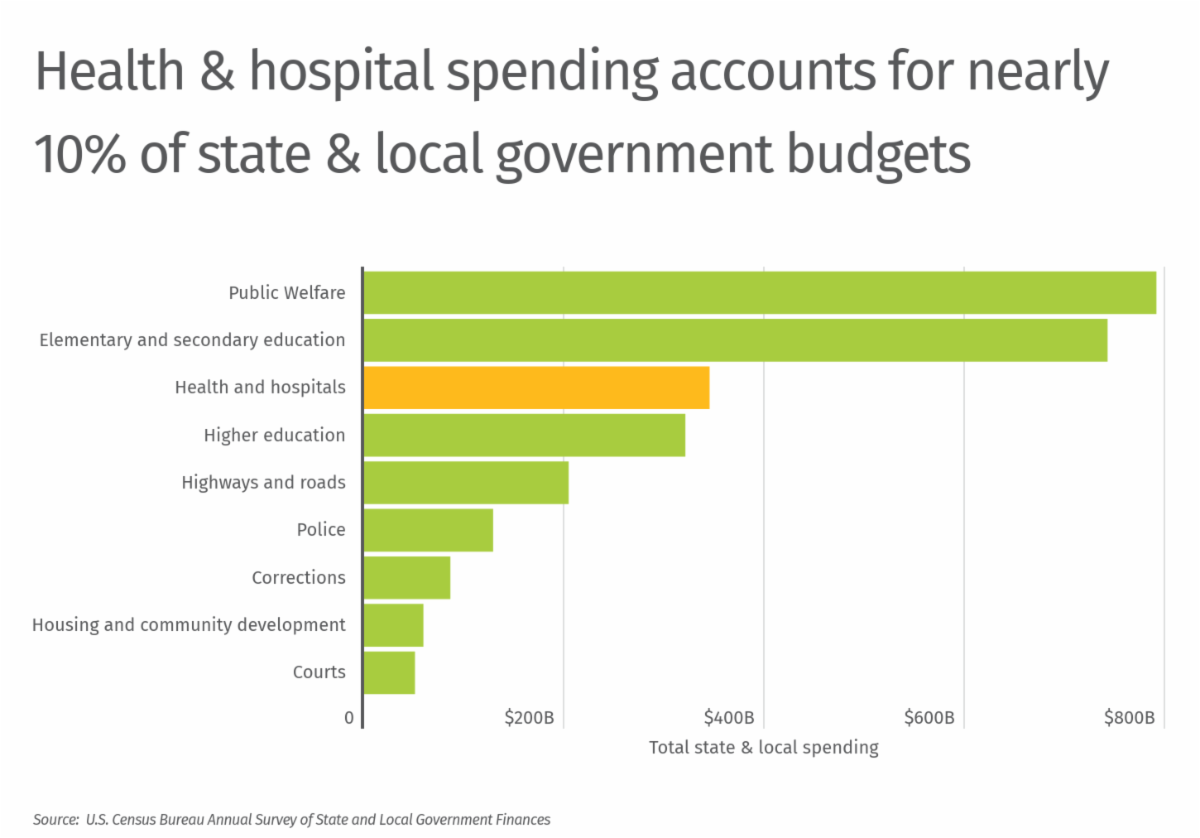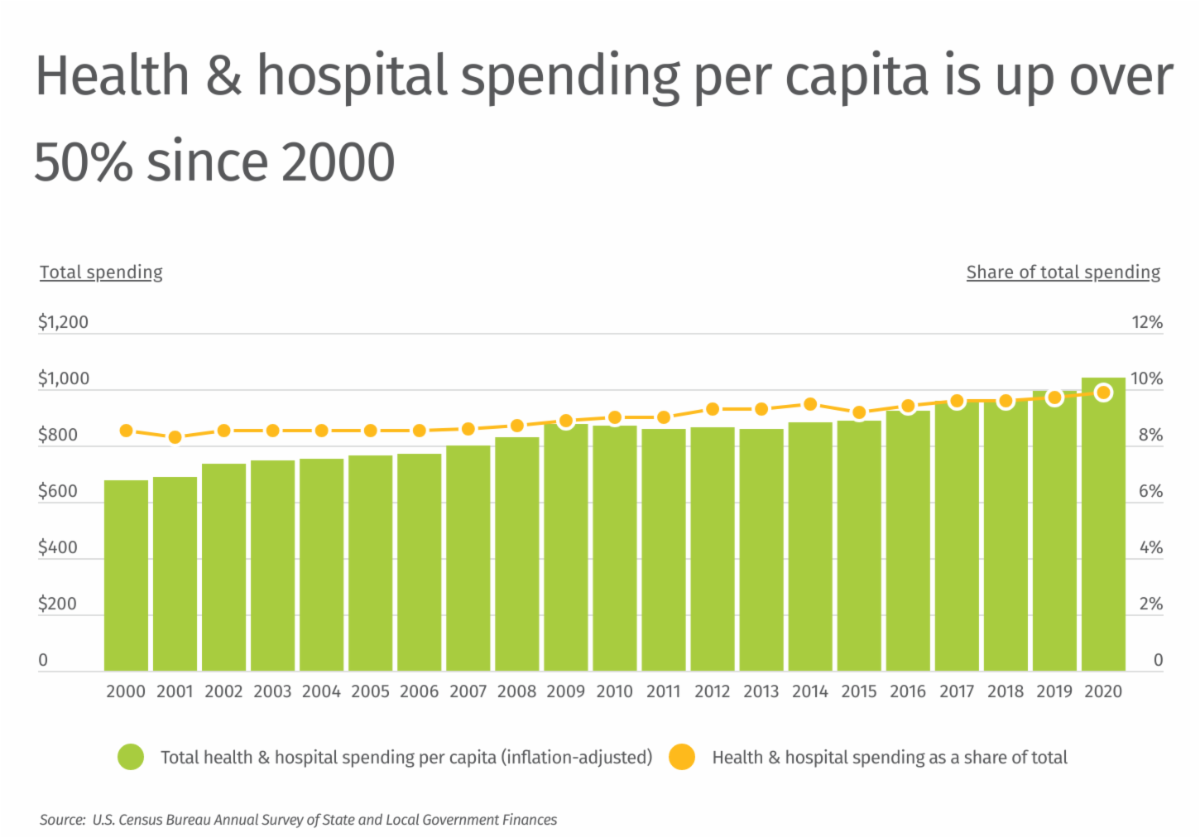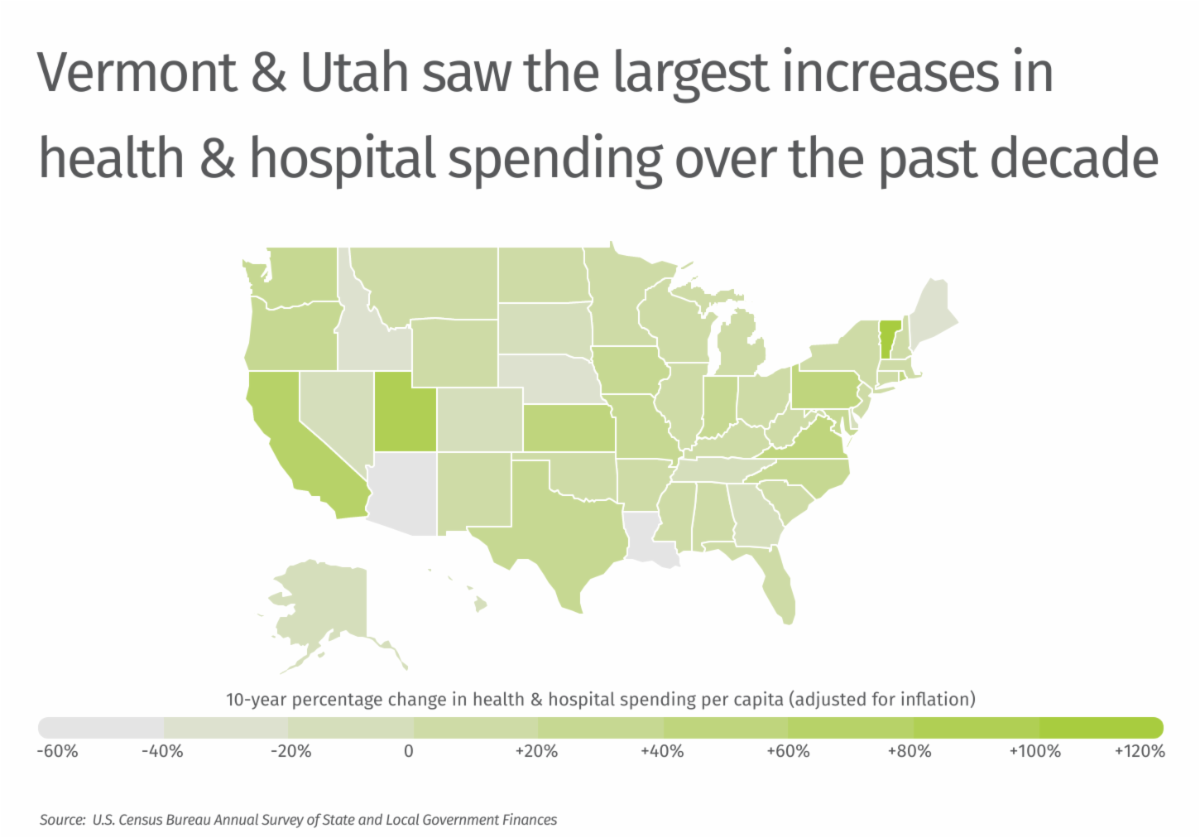States Spending the Most on Health and Hospitals
Thursday, November 17th, 2022
The challenges facing the healthcare sector in the U.S. are numerous. The U.S. lags behind other developed nations on many key metrics of health, including life expectancy, chronic disease burden, and avoidable deaths. The population has been growing older on average with the aging of the Baby Boomers, creating increased demand for health services. Longtime public health challenges like obesity, substance abuse, and mental illness have wide-ranging impacts on Americans’ overall health and well-being. And in the last few years, the COVID-19 pandemic has placed unusually heavy strain on healthcare providers and hospitals.
With these many interlocking and compounding challenges, the U.S. spends heavily to support the healthcare system. According to federal data, national health expenditures in the U.S. total $4.1 trillion per year, making up nearly 20% of the nation’s GDP. The bulk of this spending comes from the federal government, which contributes 36.3% of expenditures, and U.S. households, which account for 26.1%.
Often underappreciated in discussions of the U.S. health system is the role of state and local governments. States and localities frequently fund public hospitals, health inspections, mental health and substance abuse programs, water and air quality programs, and payments to private hospitals for public health services. State and local governments funded 14.3% of total national health expenditures in 2020.
 This spending is one of the most significant budgetary responsibilities of state and local governments. Health and hospitals represent the third largest spending category for state and local governments, behind only public welfare and elementary and secondary education. Collectively, governments spend $345 billion on health and hospitals each year, accounting for nearly 10% of all state and local spending.
|




